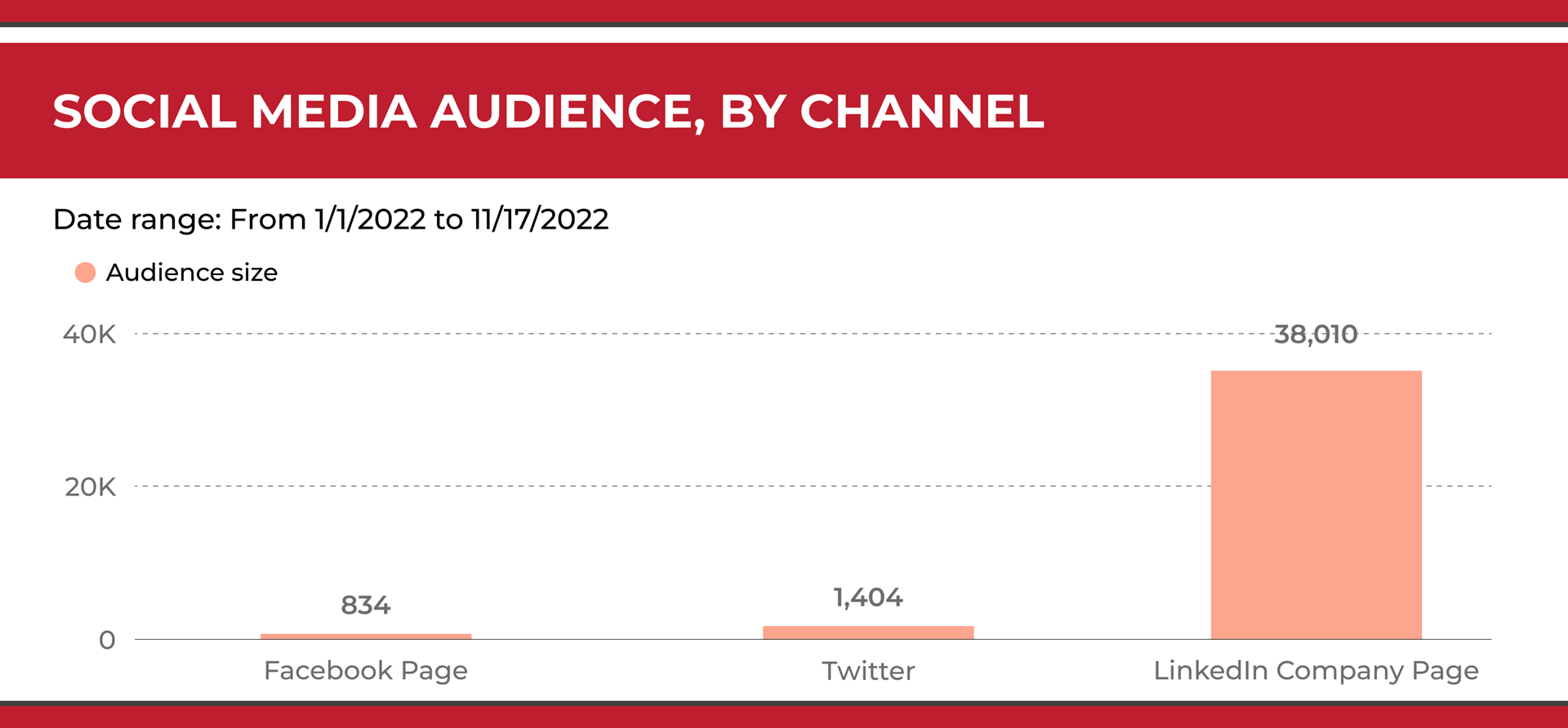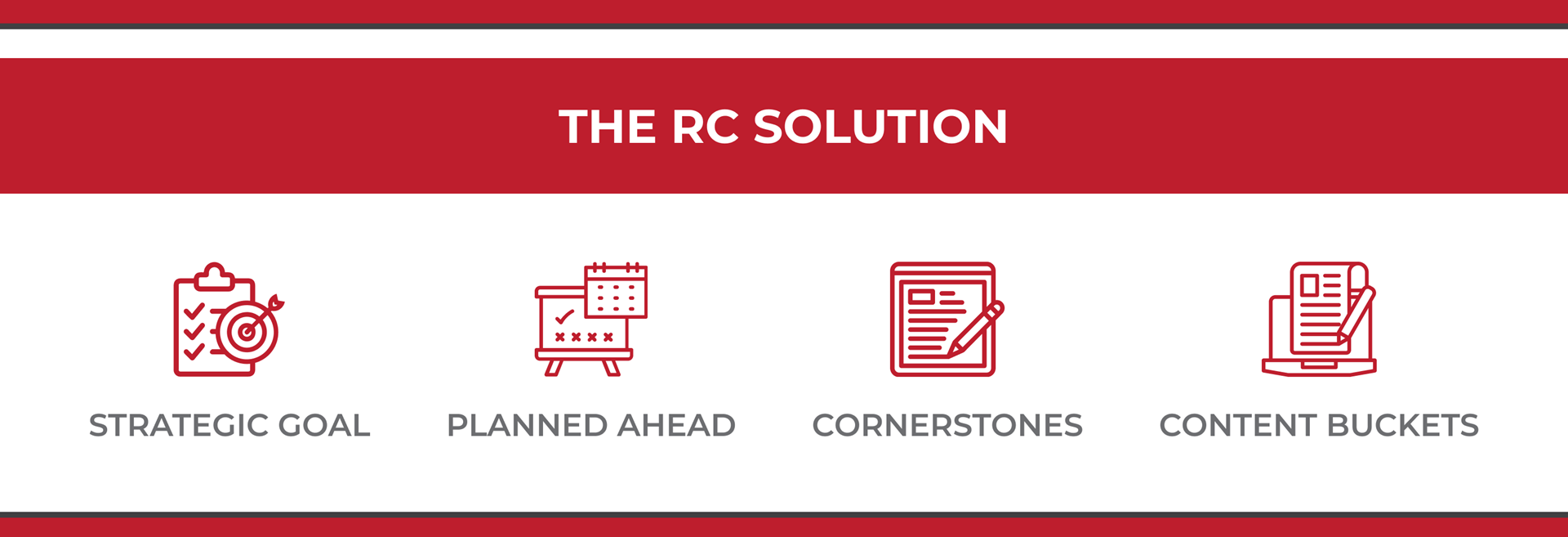Boost Revenue Attribution Tracking with a Strategic Content Plan
By Bill Skowronski
Tuesday, May 30, 2023

Marketing often happens at a frenetic pace, which isn’t good for anyone. At Red Caffeine, we pride ourselves on giving structure to the frenzy. In particular, when companies struggle to reduce their focus from what content can be created to the content that should be created, we provide an intelligent content plan and a proven process for mapping out the road ahead.

Paired with our marketing strategy framework, this content plan changed the way Optimas Solutions goes to market and connects with buyers throughout their journey. As a result, audience-centric content across diverse but integrated channels is now driven by strategy, intentionally planned, aimed directly at company growth goals, and tracked to revenue attribution.

The Challenge
In 2022, Optimas struggled, as most companies do, with revenue attribution. Its marketing team was highly active on social media, publishing organic posts to LinkedIn, Facebook, and Twitter nearly every day.
However, when we dug into the related number of interactions, we found that people responded to LinkedIn ten times more than Facebook, which carried ten times more interactions than Twitter. Not surprisingly, an analysis of each channel’s audience also raised a flag. LinkedIn followers far and away outpaced the other two channels. Remarkably, though, while Twitter showed almost twice as many followers as Facebook, content there only generated 10% of the interactions, respectively.

We synthesized this data into a recommendation that ultimately saved the company and its marketing team countless hours that could be reinvested into higher-performing channels.
The previous amount of organic social media content required a massive lift, which understandably consumed a large portion of the team’s resources. That heavy content production demand also created an environment in which the marketing department was driven by the need to produce something–anything, really, in order to feed the machine. Those deliverable outputs and the looming editorial calendar become a constant stressor, reminding them of what had to be done, rather than challenging them to ask if it was the right thing to do.
When content (and marketing, in general) becomes overly tactical and reactive, it also becomes an inefficient way to work. And, when we’re short on time or under pressure to produce content for the channels (or for the masses), we tend to fall back on what we know–instead of what our target audience wants.
What we know best (referenced above) is ourselves. So, when we’re strapped for time and have a calendar to fill, we default to messaging that focuses on us–our products, services, features, benefits, etc.

For content to be effective, the right messages must reach the right audience at the right time. And, for a content plan to be useful, it needs to be manageable. That’s why we build our content plans with clients, not for them. They can be complex, but at their core, they aren’t complicated.
1 Strategic Goal
We built the Optimas content plan around one goal—their marketing department wanted to influence revenue by preparing leads for sales. To do so, we created and distributed audience-centric content intended to move and track decision-makers across channels from awareness to action.
12 Months Planned Ahead
By looking ahead over the next 12 months at a high elevation, we could plan ahead, create ahead, and get ahead. At the same time, our plan allowed us to respond with flexibility in real-time and identify quarterly trends along the way.
4 Content Cornerstones
To ensure our multi-channel content followed an intentional narrative, we developed four cornerstones to which each message could be tied throughout the year. These cornerstone themes showed what impactful improvements Optimas makes possible for its customers. By focusing on reducing risk, optimizing inventory, enhancing operations, and elevating quality, we distilled the company’s impressive collection of over 9.1 billion parts from over 150,000 SKUs and 4,000 global suppliers down to just four core outcomes that matter to customers.
We built a search engine-optimized pillar page for each cornerstone and reorganized the Optimas library of existing content into more categorized clusters of related resources. A webinar featuring one of the company’s industry thought leaders served as a lead magnet for each theme. At the same time, a downloadable asset on each page provided a second way for users to educate themselves.
6 Content Buckets
The biggest challenge for small marketing teams also tends to be the simplest question: “What do we talk about for 12 months without repeating ourselves–or just talking about ourselves?” To lay that question to rest, we held a half-day collaborative content workshop with the Optimas marketing team.
Those insights produced thought starters for content across five focus markets they serve. The information also opened the door for us to create a wide variety of assets which includes webinars, blogs, case studies, emails, social media posts, infographics, videos, downloadable assets, press releases, presentations, and third-party published articles.
By starting with the end goal in mind and using cornerstone themes as our guardrails, we were able to map out the next year of content for Optimas. This is how we build content plans and how we recommend you do, too.







